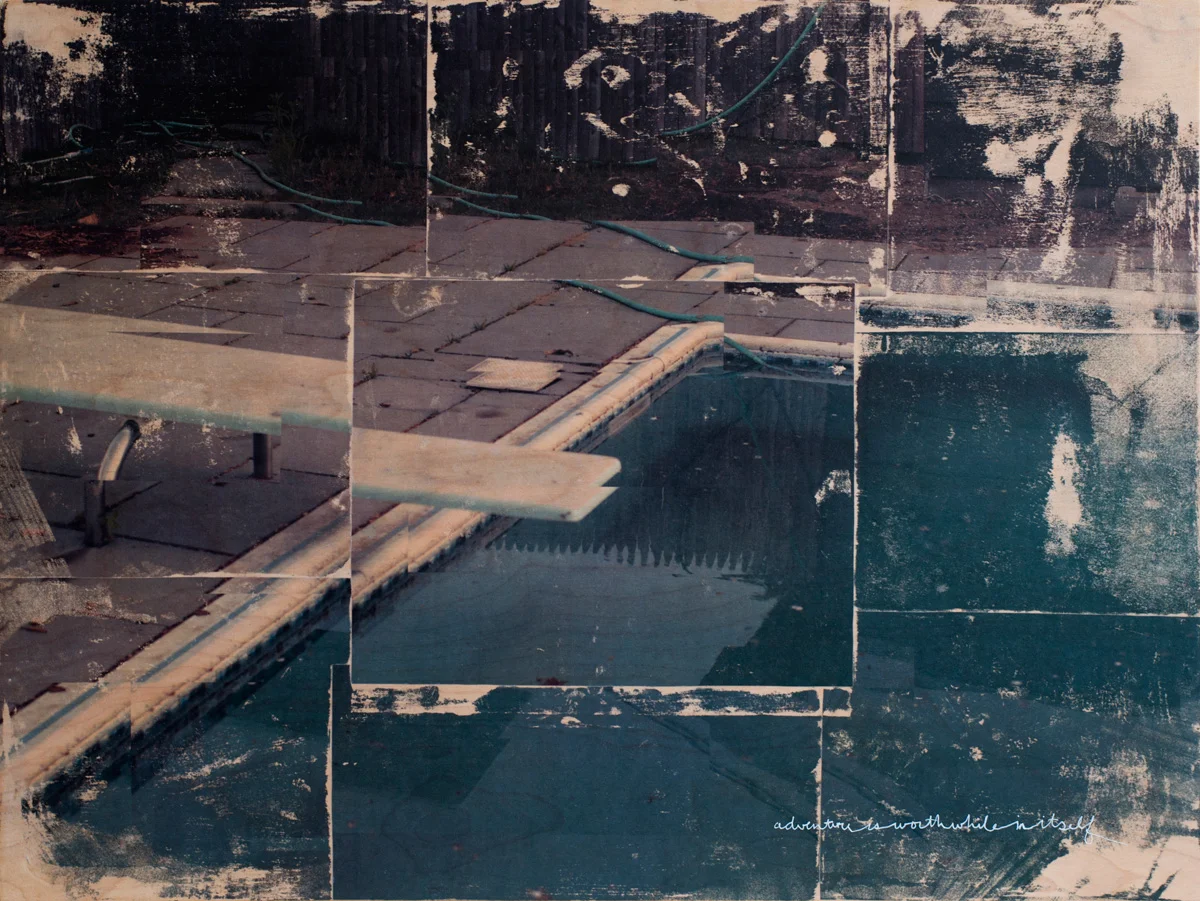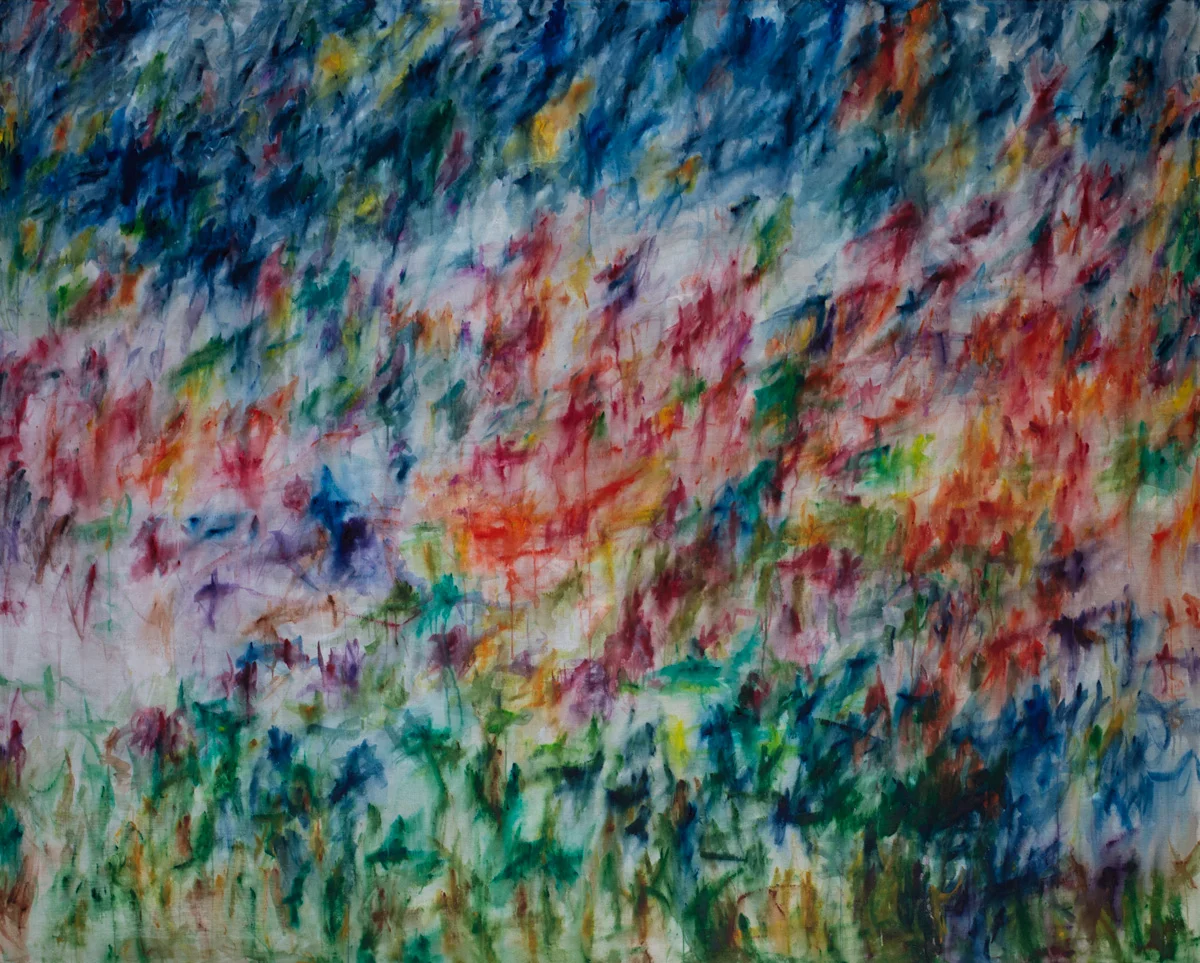
“Synthetic archways obscured by the clouds,” (2012-2014). Acrylic, ink, spray paint, and watercolor on linen. 84 x 96 inches. Courtesy the artist and MAMA Gallery, Los Angeles.

“Amelia Earhart,” (2015). Mixed media on wood panel. 18 x 24 inches. Courtesy the artist and MAMA Gallery, Los Angeles.

“A cove the cove our cove,” (2015). Mixed media on wood panel. 36 x 48 inches. Courtesy the artist and MAMA Gallery, Los Angeles.

“The colors once natural, where now only synthetic,” (2014). Acrylic, graphite, and watercolor on linen. 72 x 90 inches. Courtesy the artist and MAMA Gallery, Los Angeles.
[](#)[](#)
Cole Sternberg
Candy Apple Grey Paint
Cole Sternberg’s “behind the clouds the fireworks became less of a distraction,” could stand alone as poetry, but it’s the title of a single panel in his exhibition, A Moment Near The Sea. In “behind the clouds...”, he applies mixed material onto wood, the series imbuing a dissociative effect, an ineffable amnesia of events perceived without having been sensed.
The medium is the message, and Sternberg’s variance formulates subversive commentaries on social issues—from human rights activism and its relationship to law, to the media and concepts of content overload. Sternberg’s anomolous approach could be expected though, given his education: studying law at American University.
When Sternberg tells a story through blurry and convoluted means, he intuits a barbiturate effect—the works are soothing, if not frustrating. It’s recommended to see them in context with their melancholic titles. Take, for instance, “a moment…” where a square-patched collage of incoherent cursive—dark, brooding hues crowded with chalk-swirl lines (are we lost within a fictional elementary school?)—draws the viewer in, panel by panel, anchoring them in an ephemeral investigation. Then to overdeveloped landscape photos of lonesome foliage, a pool and its reflection, and a first-person POV on a diving board, each cut up and laid in overlaps. Sternberg’s work contemplates itself, a narrative beyond description. “skylight,” “one man show,” “amelia earhart,” “jumping in,” read the titles. It’s a colorful scansion, one that might arguably lead to the most frightening frontier—one where the language, which governs us, also perceives itself.
#### _Your art sometimes uses fragmentary effects and textures, are you consciously drawn towards those types of form and pattern, or is that something that just emerges organically from the work that you create?_
I’m not really sure. I think for me the line between conscious, subconscious, and unconscious is difficult to draw. Form and composition certainly play a significant role in each work and if said composition is not sound, the process continues on the piece until it is. Glad I answered that so clearly.
#### _Your work spans a variety of media. What role does mood play in drawing you towards a particular form? For example, do you find yourself painting when you’re happy, or writing poetry when you’re melancholic?_
Anger, sarcasm and frustration certainly drive the writing and forethought of painterly works. Painting itself tends to shift that mood towards a more comforting one. Finishing a work in any media that pleases me brings on the most positive of moods.
#### _You studied law. Do you think that the legal mode of thinking has manifested in your art?_
I went to law school due to interests in a few things, chiefly, the practice of exploiting language to control, the role of international law in public policy, and to fill three years of time while reading books and living off student loans. The use and structuring of language, as well as many social political components of my work is certainly grounded in those years of study.
